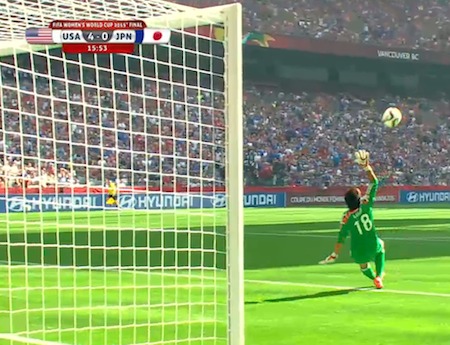Fox Scores Big With Women’s World Cup

Along with the U.S. women’s national team, Fox Sports scored big with the World Cup.
Fox generated an estimated $26.8 million in advertising revenue for its game coverage on its broadcast and cable networks during the tournament, according to iSpot Media.
Other sources said that when including sponsorships, other programming and content on other platforms, Fox’s ad revenue topped $30 million, outpacing the revenue generated in the 2011 World Cup, which appeared on ESPN.
The women's World Cup is the first of several World Cups Fox will televise under a long-term agreement with FIFA.
The U.S. women defeated Japan, scoring early and often. The final score was 5-2. The championship match on Sunday drew a 15.2 rating and 27 share in metered markets, setting a new record for a soccer match on a single network. The women’s World Cup final in 1999—USA vs. China—drew a 13.3 rating. The audience peaked at an 18.3 ratings from 8:45 to 9 pm ET, which the U.S. celebrated its victory.
According to iSpot, the top spenders on the World Cup matches were Nationwide Insurance at about $2.1 million, Fiat at $1.7 million, Ford at $1.5 million, Visa at $1.3 million, and Bud Light at $1 million.
The most familiar ad was the blue pill ad from Fiat, which was backed with about 6% of the total ad spending during the games. iSpot says the ad generated 20% of the digital engagement created by ads during the competition.
Broadcasting & Cable Newsletter
The smarter way to stay on top of broadcasting and cable industry. Sign up below
Twitter said the World Cup generated 9 billion impressions from tweets between June 6 and July 5. The top player was midfielder @CarliLloyd, who scored three goals in the final, and the top two teams were #USA and #Jpn.
Jon has been business editor of Broadcasting+Cable since 2010. He focuses on revenue-generating activities, including advertising and distribution, as well as executive intrigue and merger and acquisition activity. Just about any story is fair game, if a dollar sign can make its way into the article. Before B+C, Jon covered the industry for TVWeek, Cable World, Electronic Media, Advertising Age and The New York Post. A native New Yorker, Jon is hiding in plain sight in the suburbs of Chicago.










